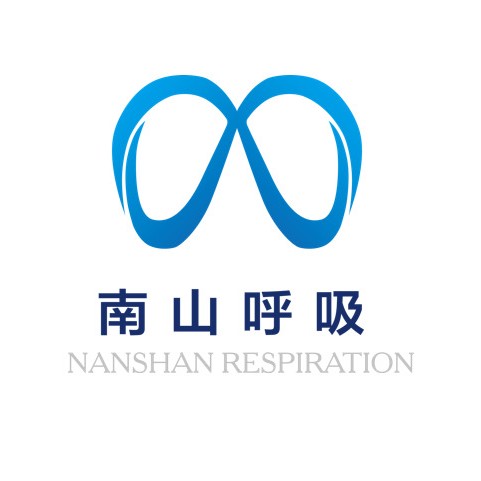体内过敏原特异性激发试验的临床应用
点击蓝字关注我们哦~~~
个人简介

❖王万钧
2012年广州呼吸疾病研究所呼吸内科硕士毕业,师从变态反应学专家李靖教授。2012.7起任呼吸科住院医师、住院总医师、主治医师。参与申请国自然面上项目《标准化变应原屋尘螨鼻激发试验对变应性鼻炎和哮喘患者上下气道炎症的影响》,以第一作者在Allergy、American Journal of Rhinology & Allergy、中华医学杂志(英文版)等发表3篇SCI文章。
过敏原特异性激发试验(allergen specific provocation test, ASPT)是过敏性疾病诊断的“金标准”,在过敏原检查方法中占有重要的地位,根据变态反应发生的场所不同,可分为体内(in vivo test)和体外(in vitro test)激发试验。体内激发试验包括眼结膜激发试验、鼻激发试验、支气管激发试验、口服激发试验、皮肤激发试验等;体外激发试验包括嗜碱性粒细胞激发试验、肥大细胞激发试验、淋巴细胞转化试验等。本文我们主要阐述体内过敏原激发试验的应用现状。
结膜激发试验(Conjunctival allergen provocation test, CAPT)
结膜激发试验用于确定引起眼部过敏性症状的过敏原,目前已作为临床上诊断季节性或常年性结膜炎、过敏性角结膜炎的重要方法,也可诊断鼻炎、食物过敏及乳胶过敏[1] [2, 3]。有研究发明了高分辨数据测光的方法评估CAPT,避免了依据结膜充血红肿等症状评分判断的误差[4]。2017年Fauquert在CAPT指南上阐述了其意义、机制、适应症、阳性判断标准、操作流程,进一步规范了其临床应用[5]。然而CAPT在罕见的过敏性体质中有可能出现眼眶水肿、鼻结膜炎、喉头水肿、荨麻疹,甚至哮喘发作、过敏性休克等情况,虽然很少出现超过24小时的迟发相反应,但为安全起见需在检查后观察至少2小时,并在经验丰富、人员设备充足的中心进行[5]。
口服激发试验(Oral challenge test, OCT)
口服激发试验包括口服食物激发和药物激发。食物过敏是导致过敏性休克的最主要病因[6],双盲安慰剂对照口服激发试验(Double-blind placebo-control food challenge, DBPCFC)主要用于诊断儿童或成人食物过敏或食物不耐受,可诊断出1-10.8%的食物过敏[7]。2004年Jensen发布食物激发指导文件,但由于仍缺乏大型随机、双盲对照临床研究数据支持以及伦理学方面的问题[8],所以还未形成指南共识,因此没有标准化的激发流程。DBPCFC需要在人员及抢救设备均充足的和有过敏性休克处理经验的中心进行,并且一定要严格筛选合适的病人进行激发[8]。Pelikan Z发现牛奶的摄入激发试验(Oral food ingestion challenge, OFICH)和DBPCFC相关性很好,提示OFICH可作为牛奶过敏哮喘病人的诊断手段,DBPCFC作为补救诊断方法[9]。 OFC类型包括三种:单盲、双盲及不设盲,DBPCFC阴性时必须继续行不设盲激发以排除假阴性可能[10]。 另一种口服药物激发试验(Drug provocation test, DPT)主要用于诊断药物高敏感性(Drug hypersensitivity, DHS),尤其是临床常用的非甾体类抗炎药和抗生素[11],常应用于药物过敏体外试验或皮试阴性的诊断不明确的病例中,而这些导致过敏的药物往往也是挽救患者生命所需的,并且权衡风险利弊不能停用的[12];有研究者发现在主诉有青霉素过敏史但青霉素口服激发阴性的病人在使用青霉素过程中仍然很安全,药物过敏发生率并无增加[13],提示了青霉素类抗生素的过敏发生率其实并没有那么高。口服药物激发流程较复杂,可能会有严重不良反应发生,需备好抢救设备[12]。
皮肤激发试验(Skin provocation test, SPT)
皮肤激发试验主要包括皮肤斑贴(Patch test, PT)、皮肤点刺(Skin prick test, SPT)及皮内试验(Intradermal test, ID);相比起其他几种激发试验,这是变态反应临床应用最广泛的体内激发试验,目前常规用于变应性鼻炎、支气管哮喘、荨麻疹等疾病的临床诊断、脱敏疗效评估等。PT常规用于儿童各种过敏性接触性皮炎的辅助诊断[14],能针对几百种可导致皮炎各种化学物质及混合物的进行检测[15],其中药物斑贴试验(Drug patch test, DPT)能代替行口服药物激发试验[16],临床用于评估药物过敏;SPT是临床上最常用的一种皮肤过敏原激发试验,与体外过敏原特异性IgE检测的相关性良好[17],具有性价比高,便捷等优点,但受人为因素影响较大, 仅限于吸入性过敏原的检测,临床上尚未有食物、昆虫毒液、职业过敏原及药物的皮试过敏原[18],且皮试阳性不能等同于过敏,可能只是特应质[19]。ID是一项风险较大,受试者较难耐受的激发试验,且安全性低,临床很少应用[18]。
气道激发试验(Airway provocation test, APT)
气道激发试验包括鼻激发(Nasal provocation test, NPT)及支气管激发(Bronchial provocation test, BPT),国外最早的气道激发试验追溯到100多年以前[20],我国叶世泰教授在上世纪60年代首次通过花粉鼻激发发现北方地区花粉过敏的主要过敏原为蒿属花粉[21]。APT是目前的研究的热点,近年大量临床及基础研究运用过敏原鼻激发方法诱发出下气道炎症和反应性增高[22-24],或通过支气管激发试验观察到上气道炎症加重[25-27],论证了“同一气道,同一疾病”,使鼻炎和哮喘同时治疗的原则深入到呼吸科和耳鼻喉科医生的临床常规。 鼻激发临床上用于鼻炎病史与过敏原皮试或其他体外试验不一致时,尤其在病人脱敏治疗前,是诊断变应性鼻炎的金标准[28];最近提出的“局部过敏性鼻炎”已证实是一个具有独立危险因素的鼻炎亚型[19],它与变应性鼻炎及非变应性鼻炎之间的鉴别诊断也必须靠鼻激发[29]甄别,而在评估过敏原免疫治疗疗效方面,目前还缺乏循证[30],需要更多的研究。过敏原支气管激发与早已在我国临床上开展的组胺、乙酰甲胆碱支气管激发试验不同,它主要作为一种研究方法,观察哮喘病人过敏原暴露后的上下气道反应性及炎症,应用于职业性哮喘及环境致敏因素评估[31]、哮喘发病机制和新药开发的药效评价等[32, 33]。鼻激发和支气管激发合称为全气道激发试验,或称全肺激发试验(Whole lung challenge, WLC),能反映整个呼吸道致敏状态[26],若能通过设计变应原吸入方式、吸入装置,并对过敏原标准化、吸入浓度等严格质控,日后可研发出通过鼻面罩或头盔雾化吸入过敏原的全气道激发装置提供临床研究使用。
过敏原室内激发试验(Allergen challenge chamber, ACC)
ACC是将病人置入一个密闭室内,模拟病人在自然状态下接触过敏原后诱发的眼部、皮肤及全呼吸道的症状,可看作是同时进行皮肤、结膜、鼻、支气管激发,因此激发试验不受季节的影响,主要用于确定气传性过敏原空气浓度的研究,不常规用于临床[34],它在评估抗过敏及脱敏方面有一定作用[35]。Badorrek通过ACC对变应性鼻炎鼻分泌物白介素-5,6,13等进行研究,发现均有较好可重复性及特异性并用于评价新研发的抗过敏药疗效[36]。由于空气中过敏原浓度、室内的环境包括湿度、温度、氧气、CO2等均有严格的控制,激发试验相对安全,但仍会发生全身性及迟发相的过敏反应,所以激发后需观察24小时,同样需要在抢救等设备充足的中心进行[34]。
综
上所述,各种体内过敏原特异性激发试验(见附表1)属于诊断方法中的“终极手段”,体现了过敏性疾病的“精准诊断”。在变态反应领域的临床和研究均占有重要地位,部分激发试验的流程已经有指南或专家共识规范化管理,但质量控制及安全性仍然很重要[37]。“人”和“过敏原”是关键,所以一定要以病史为中心,询问病史是激发试验安全性的重要保障,激发目的是为了证实临床诊断;另外标准化的过敏原是激发试验的核心,直接影响激发试验的成败。
表1 各种体内过敏原特异性激发试验特点比较

点击可戳大图↑↑↑
参考文献
上下滑动阅览
1. Lindvik H, Lødrup Carlsen KC, Mowinckel P, etal, Conjunctival provocation test in diagnosis of peanut allergy in children. Clin Exp Allergy, 2017. 47(6): p. 785-794.
2. Tabar AI, Anda M, Bonifazi F, etal., Specific immunotherapy with standardized latex extract versus placebo in latex-allergic patients. Int Arch Allergy Immunol., 2006;. 141(4): p. 369-76.
3. Anantasit N, Kamchaisatian W, Supakornthanasarn W, etal, Comparison of conjunctival and nasal provocation tests in allergic rhinits children with Dermatophagoides pteronyssinus sensitization. Asian Pac J Allergy Immunol, 2013 31(3): p. 227-32.
4. Astvatsatourov A, Reydelet Y, Mösges R, etal, Photodocumentation of Allergic Severity under Conjunctival Provocation. Stud Health Technol Inform. , 2015. 213: p. 11-4.
5. Fauquert, J.L, Jedrzejczak-Czechowicz, et al Conjunctival allergen provocation test : guidelines for daily practice. Allergy, 2017. 72(1): p. 43-54.
6. Boden, Stephen R, Wesley Burks, Anaphylaxis: a history with emphasis on food allergy. Immunological Reviews, 2011. 242(1): p. 247-257.
7. Roberto .JR, Thomas K, Colin S, et al The prevalence of food allergy: A meta-analysis. Journal of Allergy and Clinical Immunology, 2007. 120(3): p. 638-646.
8. Bindslev-Jensen C, Bengtsson U, Blanco C, etal; European Academy of Allergology and Clinical Immunology.Standardization of food challenges in patients with immediate reactions to foods--position paper from the European Academy of Allergology and Clinical Immunology. Allergy, 2004 59(7): p. 690-7.
9. Pelikan Z. Asthmatic response to milk ingestion challenge in adults: a comparison of the open and double-blind challenges. Int Arch Allergy Immunol, 2013. 161(2): p. 163-73.
10. Bock SA, Atkins FM, Zeiger RS, etal. Double-blind, placebo-controlled food challenge (DBPCFC) as an office procedure: a manual. J Allergy Clin Immunol 1988 82(6): p. 986-97.
11. Aberer W, Romano A, Blanca M, etal. European Network for Drug Allergy (ENDA); EAACI interest group on drug hypersensitivity., Drug provocation testing in the diagnosis of drug hypersensitivity reactions: general considerations. Allergy, 2003. 58(9): p. 854-63.
12. Brockow K, Przybilla B, Aberer W, Guideline for the diagnosis of drug hypersensitivity reactions. Allergo Journal International, 2015. 24(3): p. 94-105.
13. Marwood J, Aguirrebarrena G, Kerr S, et al. De-labelling self-reported penicillin allergy within the emergency department through the use of skin tests and oral drug provocation testing. Emergency Medicine Australasia, 2017.
14. Fonacier L. A Practical Guide to Patch Testing. The Journal of Allergy and Clinical Immunology: In Practice, 2015. 3(5): p. 669-675.
15. de Waard-van der Spek FB, Darsow U, Mortz CG et al., EAACI position paper for practical patch testing in allergic contact dermatitis in children. Pediatric Allergy and Immunology, 2015. 26(7): p. 598-606.
16. Johansen JD, Aalto-Korte K, Agner T et al., European Society of Contact Dermatitis guideline for diagnostic patch testing - recommendations on best practice. Contact Dermatitis, 2015. 73(4): p. 195-221.
17. 黄夏飞,李靖,张罗,等, 尘螨变应原SPT与血清sIgE 诊断螨过敏症的相关性. 中华检验医学杂志, 2011. 34(11): p. 999-1002.
18. Bousquet J, Heinzerling L, Bachert C, et al. Practical guide to skin prick tests in allergy to aeroallergens. Allergy, 2012. 67(1): p. 18-24.
19. Rondon C, Eguiluz Gracia I, Plaza C, etal. Local allergic rhinitis is an independent rhinitis phenotype: The results of a 10-years follow-up study. Allergy, 2017.
20. Melillo G, Cocco G, Davies RJ, etal. EAACI provocation tests with allergens. Report prepared by the European Academy of Allergology and Clinical Immunology Subcommittee on provocation tests with allergens. Allergy. ;, 1997. 52(35 Suppl): p. 1-35.
21. 叶世泰, 中国变态反应学科的诞生和发展. 中华微生物学和免疫学杂志, 2001. 21(Suppl): p. 1-3.
22. Wang, W, Xian M, Xie Y, et al. Aggravation of airway inflammation and hyper-responsiveness following nasal challenge withDermatophagoides pteronyssinusin perennial allergic rhinitis without symptoms of asthma. Allergy, 2016. 71(3): p. 378-386.
23. Chusakul S, Phannaso C, Sangsarsri S, et al. House-dust mite nasal provocation: A diagnostic tool in perennial rhinitis. American Journal of Rhinology and Allergy, 2010. 24(2): p. 133-136.
24. Bonay M, Neukirch C, Grandsaigne M, et al Grandsaigne M, et al, Changes in airway inflammation following nasal allergic challenge in patients with seasonal rhinitis. Allergy 2006. 61(1): p. 111-118.
25. Braunstahl GJ, Kleinjan A, Overbeek SE, etal. Segmental bronchial provocation induces nasal inflammation in allergic rhinitis patients. Am J Respir Crit Care Med, 2000. 161(6): p. 2051-2057.
26. Lopuhaä CE, Out TA, Jansen HM, et al.,, Allergen-induced bronchial inflammation in house dust mite-allergic patients with or without asthma.. Clinical & Experimental Allergy, 2002. 32(12): p. 1720-1727.
27. Casset A, Birba E, Chenard MP, etal. Bronchial challenge test in asthmatics sensitized to mites: role of particle size in bron-chial response. J Aerosol Med 2007;. 20(4): p. 509-18.
28. Soliman M, North ML, Steacy LM, et al. Nasal allergen challenge studies of allergic rhinitis: a guide for the practicing clinician. Annals of Allergy, Asthma & Immunology, 2014. 113(3): p. 250-256.
29. Rondón C, Togias A, Fokkens WJ, etal. Local allergic rhinitis: concept, pathophysiology, and management. J Allergy Clin Immunol., 2012 129(6): p. 1460-7.
30. Pfaar O, R.Gerth van Wijk. Mite-Allergic Rhinitis: How to Evaluate Clinical Efficacy in Allergen-Specific Immunotherapy Trials? Current Treatment Options in Allergy, 2015. 2(1): p. 1-9.
31. Casset A, Purohit A, le Calve S, etal. Inhaled formaldehyde exposure: effect on bronchial response to mite allergen in sensitized asthma patients. Allergy 2006;. 61(11): p. 1344-50.
32. L.P. Boulet, M.E. Boulay, P. O’Byrne, etal. The allergen bronchoprovocation model: an important tool for the investigation of new asthma anti-inflammatory therapies. Allergy, 2007:. 62: p. 1101-10.
33. Nair P, Kjarsgaard M, InmanMD, etal. Mepolizumab for prednisone-dependent asthma with sputum eosinophilia. N Engl J Med, 2009. 360: p.:985-93.
34. Agache I, Bilò M, Braunstahl GJ, et al. In vivo diagnosis of allergic diseases-allergen provocation tests. Allergy, 2015. 70(4): p. 355-365.
35. Hohlfeld JM, Larbig M, Lavae-Mokhtari M, etal. Diagnostic value of outcome measures following allergen exposure in an environmental challenge chamber compared with natural conditions. Clin Exp Allergy., 2010 40(7): p. 998-1006.
36. Badorrek P, Müller M, Koch W, et al. Specificity and reproducibility of nasal biomarkers in patients with allergic rhinitis after allergen challenge chamber exposure. Annals of Allergy, Asthma & Immunology, 2017. 118(3): p. 290-297.
37. Klimek L, Renz H, Demoly P, etal. Schmid-Grendelmeier P, Cardona V, Papadopoulos NG., Diagnostic test allergens used for in vivo diagnosis of allergic diseases are at risk: a European Perspective. Allergy, 2015. 70(10): p. 1329-31.
38. Oppenheimer J. Skin testing. Ann Allergy Asthma Immunol. , 2006 Feb. 96((2 Suppl 1)): p. S6-12.
39. Diamant Z, Gauvreau GM, Cockcroft DW, et al. Inhaled allergen bronchoprovocation tests. Journal of Allergy and Clinical Immunology, 2013. 132(5): p. 1045-1055.e6.

 快来抢沙发
快来抢沙发


